
All categories
Featured selections
Trade Assurance
Buyer Central
Help Center
Get the app
Become a supplier

(511 products available)
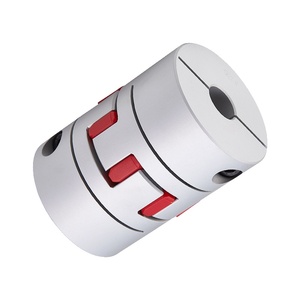






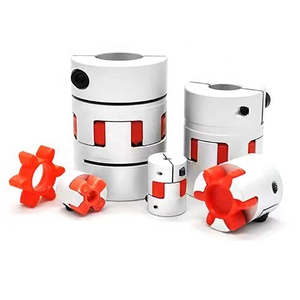
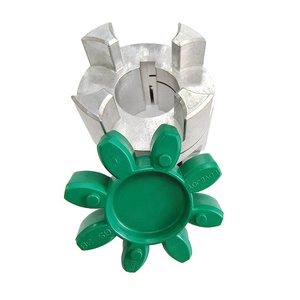












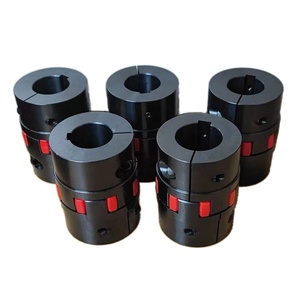






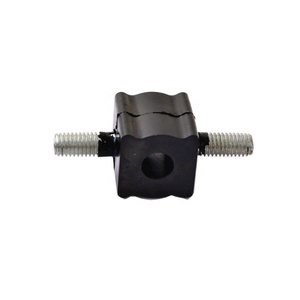


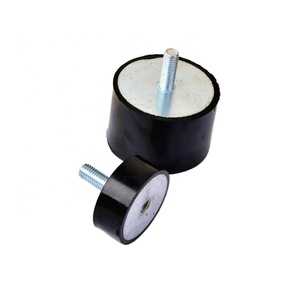














PU elastic coupling buffers come in different forms. Each of them has a role in minimizing shock and vibration transmission in different settings.
Sleeve couplings
Sleeve couplings have a simple design. They incorporate a central metal spindle connected by a flexible polyurethane sleeve. This coupling easily absorbs shock and accommodates misalignment. It is ideal for low to moderate torque applications. It allows for easy installation even in restricted spaces.
Gear couplings
Gear PU elastic couplings have teeth on both the coupling and the connected shafts that mesh together. This setup provides a stronger coupling that can handle higher loads and more torque. At the same time, it reduces vibration and shock. An example of this coupling in action is in industrial gearboxes. Its strength allows it to work in tough mining and metalworking industries.
Oldham couplings
These couplings feature two metal discs with a slot for a floating center disc. This design absorbs shock and provides smooth operation while allowing for significant parallel misalignment. They are suitable for servomotors and other precision equipment due to their low backlash.
Helical gear couplings
These are a type of geared coupling. Here, the gear teeth are cut in a helical (angled) shape rather than straight. This makes for a smoother operation with less noise and wear than traditional gear couplings. The helical angle helps distribute the load more evenly. This reduces the risk of overloading a single gear tooth.
Blind hole couplings
These couplings serve a unique and practical role in reducing vibrations. They tightly fit around the shaft in a blind hole design with no external visible parts. This compactness makes them suitable for small machines needing effective vibration control in a discrete package. Common applications are in medical devices and precision instruments.
When selecting a PU elastic coupling buffer, several factors come into play. These factors ensurethe chosen coupling meets operational needs while avoiding excessive vibration transfer.
Application and industry requirements
Different industries have different needs for coupling buffers. Such needs as load capacity, torque, and speed. For example, high-load industries like mining or aerospace need a heavy-duty PU coupling. Meanwhile, less intensive applications can use lightweight ones.
Vibration isolation needs
This depends on how sensitive the machine or application is to vibration. For example, precision machinery needs maximum vibration dampening. This requires a coupling with a high vibration reduction coefficient. The coefficient is the amount of vibration energy that the couplings can absorb and transform into heat.
Misalignment compensation
Certain couplings, like the Oldham or bellows couples, can help the user achieve better angular or parallel misalignment. This is important for ensuring proper shaft alignment under fluctuating loads and operating conditions. Compensation of misalignment also increases the lifespan of machine components.
Durability and environmental resistance
The durability of the coupling buffer should be top-notch. So, consider factors such as the operating environment and lubrication requirements. For example, industrial settings with high levels of dust or chemicals need a coupling with superior resistance to abrasion and chemical degradation. Since PU couplings come in two materials, users should look for the alloy that would withstand his ambient temperature and chemical exposure.
Ease of installation and maintenance
Users should go for flexible or compress couplings that offer easy installation. In applications with frequent maintenance or component replacement needs, opting for a more straightforward coupling design is essential. For instance, a torque limiter coupling is easy to install. It provides easy replacement without realigning other components.
Cost vs. performance
Finally, the budget considerations can not be overlooked. While flexible couplings provide a great benefit to the user, they may also be costly. Therefore, one must weigh the long-term benefits against the immediate costs. If the application requires high durability and reduced vibration, investing in a quality PU elastic coupling buffer will pay off in reduced maintenance costs and improved machine longevity.
The elastic PU coupling buffer finds a variety of uses in many settings. These applications highlight its flexibility and resistance to vibration.
Industrial machinery
In industrial settings, the coupling buffers help reduce vibrations from motors and other heavy equipment. This protects the gears and other components from shock and extends their life. In factories, where machines work continuously under high loads, PU buffers absorb the constant vibrations. This reduces wear on machine parts and increases efficiency.
Construction equipment
In heavy construction tools like excavators and cranes, these couplings lessen the impact of sudden changes in motion. For example, when an excavator's arm drops a heavy load, the PU coupling dampens that shock throughout the system. Without it, all that force would travel up to the motor and cause damage. Think of it like a basketball: the air-filled polyurethane bounces just enough so that just small vibrations are felt instead of huge jarring shocks.
Automotive systems
In vehicles, PU buffers help smooth out vibrations from the engine and road. They are used in drive shafts to isolate engine vibrations from the chassis. Vehicle applications require buffers that perform well under a range of speeds and loads. PU elastic couplings meet these needs while also providing a compact, lightweight design that doesn't take up much space. This is especially important in today's fuel-efficient car designs.
Robotics
Robots include these couplings on their joints and end-effectors. The robotic systems need extremely responsive, precise couplings that can quickly absorb small vibrations. These allow the robots to move smoothly without oscillating or overshooting their positions. The couplings help the robots precisely place components in electronics manufacturing or perform delicate surgeries without transfers of unwanted shocks. Without the PU couplings dampening little vibrations throughout the system, robotic arms would wobble instead of moving with the smooth, exact motions required for their tasks.
Mining equipment
Mining machines like drills and haul trucks experience enormous forces that elastic coupling buffer absorbs. In the harsh mining environment, the couplings protect sensitive parts from all the vibrations generated as drills break rock or trucks bounce over rough terrain. They also help reduce worker fatigue by lessening the amount of vibration felt in the operator's cabin. The PU material can withstand extreme temperatures and chemical exposure common in mining, like dust and water. This gives the bufferthe strength needed for highly demanding underground mining work while still damping vibrations to improve performance.
Polyurethane elastic couplings offer numerous benefits that enhance machine performance, durability, and efficiency.
Shock absorption
Polyurethane's high elasticity absorbs and dampens shocks from dynamic loads. This reduces vibration transmission to connected equipment. This protection minimizes wear on bearings, gears, and other sensitive components to improve machine reliability and extend the lifespan of costly hardware.
High torque capacity
PU couplings handle significant torque loads due to their robust tensile strength and elastic properties. This makes them suitable for heavy-duty applications in mining, manufacturing, and other industrial settings that involve large motors and mechanical loads.
Misalignment compensation
Elastic couplings accommodate shaft misalignment better than rigid couplings. The flexible PU elements can deform slightly to compensate for angular and parallel misalignment. This ensures more reliable operation in applications where alignment may be challenging to maintain. They find application in large machinery with long shafts or heavy loads that can cause misalignment over time.
No lubrication required
Unlike some coupling types, PU couplings do not require lubrication to function. This reduces maintenance needs and costs. Users do not have to worry about lubricating the coupling regularly. This is especially beneficial in hard-to-reach areas or harsh environments. Environments in which lubricant could be quickly degraded by dust, dirt, or other contaminants. PU couplings also prevent messy oil residues that can attract grime.
Chemical and abrasion resistance
Polyurethane is highly resistant to chemicals like oils, greases, and many solvents. It also stands up well to abrasion. The combination of these properties protects the coupling in industrial environments with potentially damaging substances or particulate matter. This durability ensures long-term performance even in extreme operating conditions.
Noise reduction
The damping effect of PU coupling buffers not only protects equipment from shocks but also reduces noise. Vibrations transmitted through the machine are minimized, leading to lower operational noise levels. This benefits worker comfort and helps meet regulations on permissible noise levels in industrial settings. Operating a noisy machine day after day can damage the worker's hearing over time.
Yes, PU elastic couplings are highly durable, thanks to the abrasion and chemical resistance of polyurethanes. They can withstand long-term exposure to mechanical stress without failing. This makes them ideal for heavy-duty applications.
One of the advantages of PU coupling is that they do not require lubrication. This makes maintenance easy. Regular visual inspections for wear or damage and periodic checks to ensure no dirt or debris has contaminated the coupling are recommended.
The elastomer coupling has a high torque capacity. This makes it suitable for heavy-duty applications in the industrial mining, aerospace, or manufacturing space. The PU material can also absorb much shock, reducing load peaks transmitted to connected machinery, which helps protect components from overload damage.
The lifespan varies widely based on operational conditions such as load, speed, and environmental exposure. However, because of its properties and supported mesh type, coupling buffers can last several years in normal industrial conditions before requiring replacement.
Yes, they are. Because of their composition, coupled with their design, these coupling buffers effectively reduce the noise generated in machines. They absorb most vibrations, which would otherwise cause vibrating surfaces to resonate and produce loud mechanical noises.